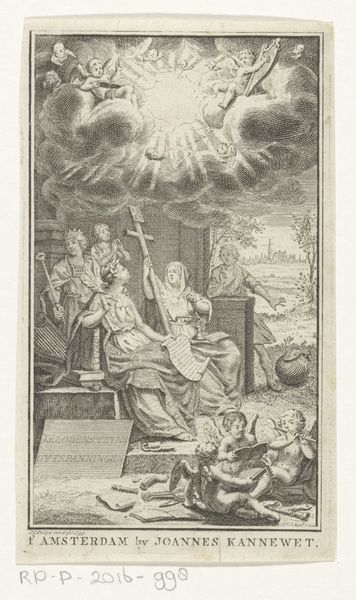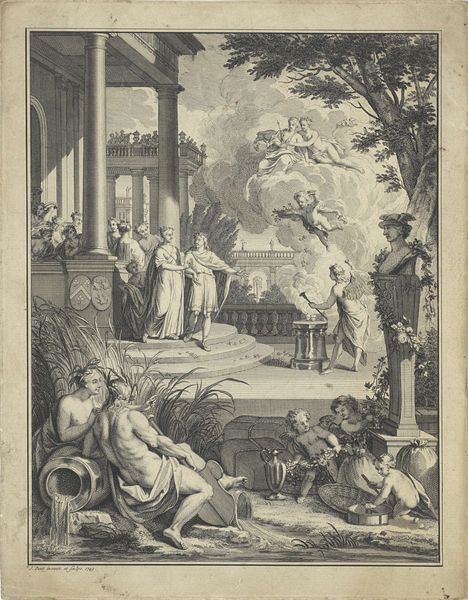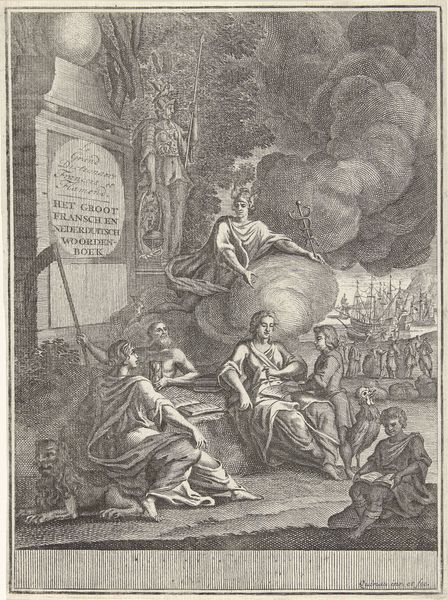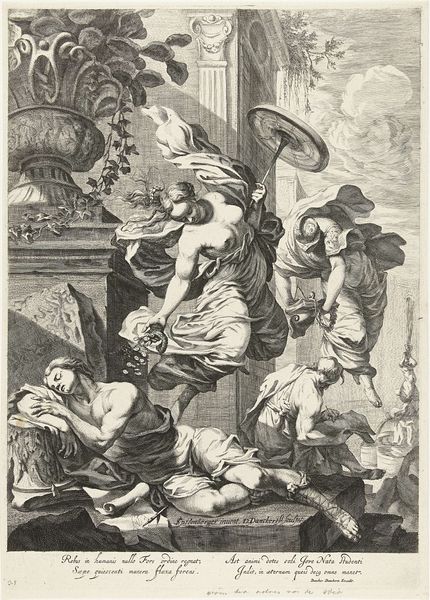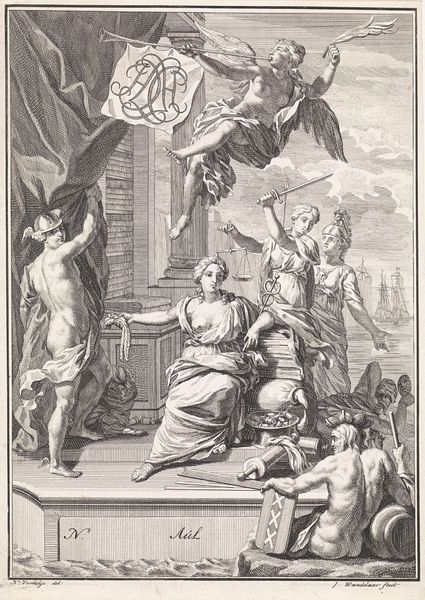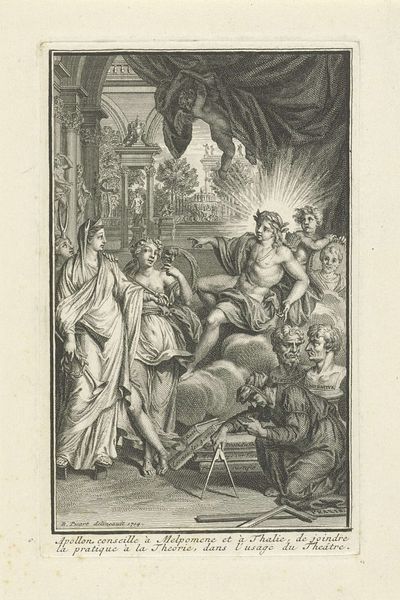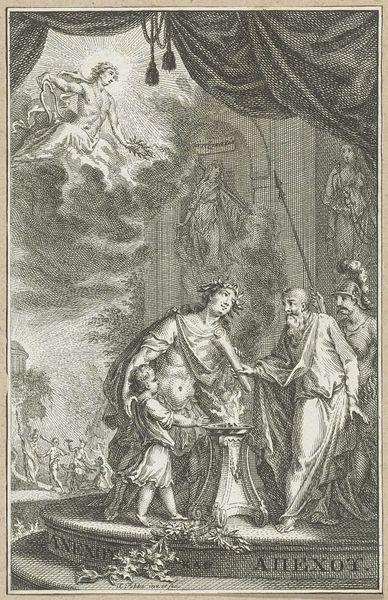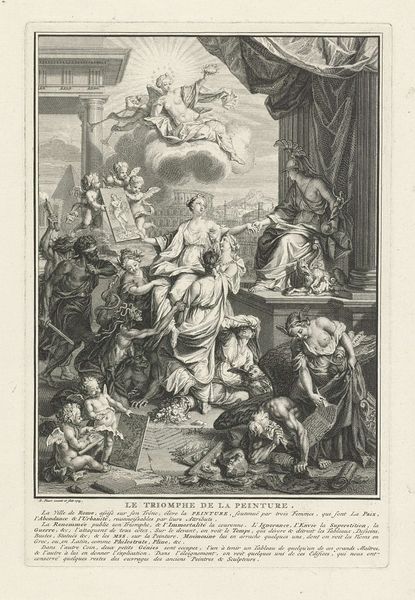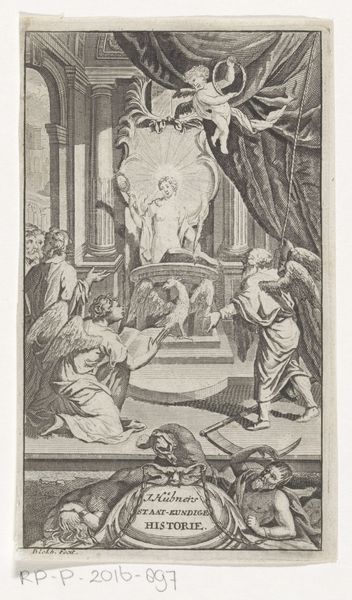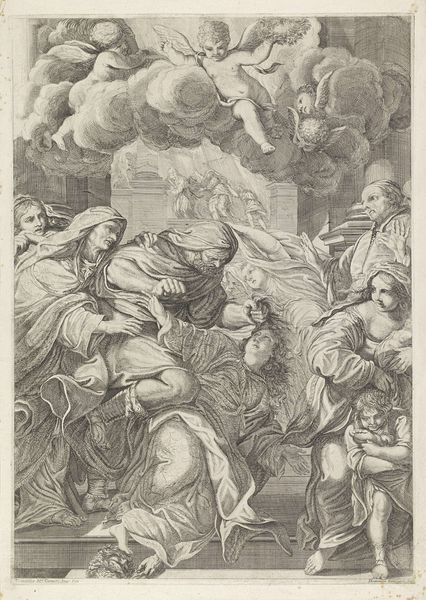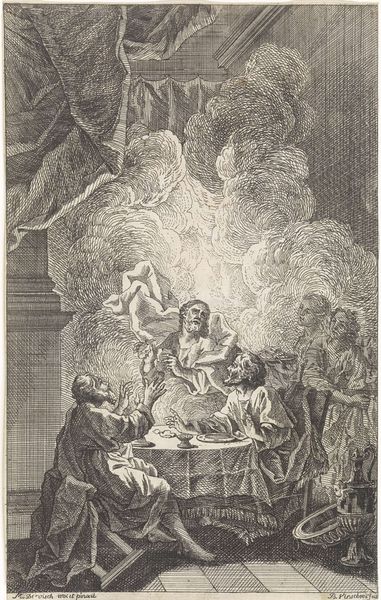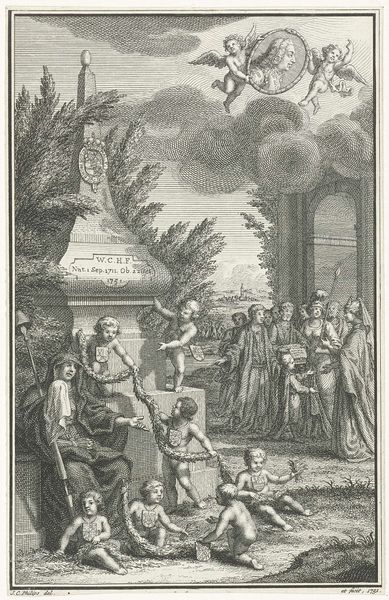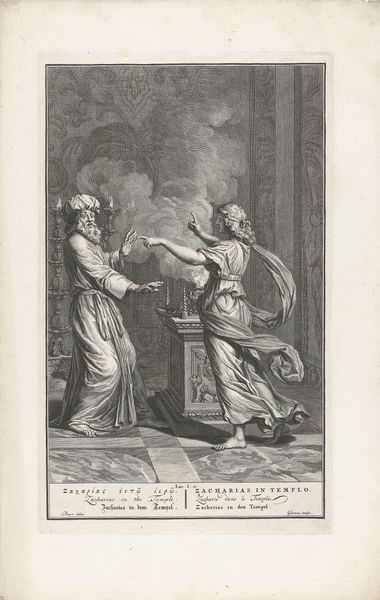
engraving
#
allegory
#
baroque
#
pen illustration
#
pen sketch
#
old engraving style
#
figuration
#
line
#
history-painting
#
engraving
Dimensions: height 138 mm, width 90 mm
Copyright: Rijks Museum: Open Domain
Curator: This is "Bijeenkomst van geestelijken," or "Meeting of Clergy," an engraving made sometime between 1725 and 1767. It's currently held here at the Rijksmuseum and was produced by Jacob Folkema. Editor: My first impression is that it's quite dramatic for an engraving. The high contrast between light and shadow and the density of the line work really evoke a sense of gravitas and even tension. Curator: Exactly. The Baroque style, evident in the dynamism and the allegory, highlights its social context. Engravings like these played a vital role in disseminating ideas during the period. This one, made with deliberate, painstaking labor, comments, through allegorical figuration, on clerical power structures. What do you see in its composition? Editor: The lines of light intersecting with smoke certainly lead my eye, which contributes to a vertical thrust countered by the weighty, seated figures. Those books scattered in the foreground serve to frame the scene while offering a visual language suggesting that scholarship is central to power. Curator: Precisely. The scattered books, though, speak to more than just academic power. It could suggest intellectual disputes or even the messiness inherent in the pursuit and dissemination of knowledge during this historical moment. They had to manually copy everything, so access was determined through material resources and physical labour. Editor: That's a compelling consideration. I was focusing on how those shapes contribute to the overall form and harmony within the image. But seeing it from your point of view, I'm more acutely aware of the sheer number of clerics assembled there, the folds of their garments, the tools required to disseminate religious propaganda or the difficulty to do it well enough, judging by the messy foreground... Curator: Right. An interesting note is the labor, how long this would take compared to, say, painting the subject, and for what price this would have been sold at the time, since most artworks would circulate among workshops for a very low price. What is an artisan really worth? What do we value more: effort, impact, intention? Editor: That question will likely continue to drive art world debate. Personally, reflecting on Jacob Folkema’s print, I am struck by how much can be expressed through what initially appears to be a simple black and white medium. Curator: Indeed. Understanding the process and social function deepens my appreciation beyond pure aesthetics. It invites us to contemplate art's relationship with broader societal narratives.
Comments
No comments
Be the first to comment and join the conversation on the ultimate creative platform.
